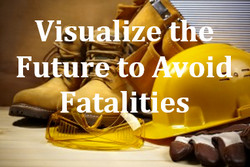 In my reading, studying and talking with many people, I have found that over half of the fatal accidents are often unanticipated and missed using our traditional approaches to accident prevention. The Heinrich Accident Triangle is very useful as we look at unsafe acts at the base of the triangle. Lots of slips, trips and falls are avoided as we do this.
In my reading, studying and talking with many people, I have found that over half of the fatal accidents are often unanticipated and missed using our traditional approaches to accident prevention. The Heinrich Accident Triangle is very useful as we look at unsafe acts at the base of the triangle. Lots of slips, trips and falls are avoided as we do this.
But, many potential, fatal accidents don’t show up in this work. Only very few of the unsafe acts at the base of the triangle ever lead to a fatality. Why does a man fall from a cell phone tower when he has his fall protection harness on properly? Why does a man rush down the ramp to quickly fix something at the end of his shift where big paper rolls are stored prior to loading, when he knows the dangers of getting caught between the rolls and getting killed? Why does a man jump onto a large baking oven conveyor belt in a hurry to enter the oven before it is cool enough to do some maintenance and gets killed? These sorts of impulsive, tragic actions aren’t picked up in our normal safety audits.
Yet many of the reports of fatal accidents indicate that the conditions and impulsive behavior surrounding these accidents were obvious in hindsight. As people think about the fatality, they often see that, while the obvious conditions and impulsive tendencies were there, they were not in people’s everyday conscious thinking.
Often, the causal details are a mystery like in the situation with some of the fatal falls from cell towers and the workers have their fall protection gear all on but somehow they didn’t have it hooked up for a fatal moment. Or the man caught between the big rolls of paper or the guy who got cooked.
One possible approach to eliminating these sorts of fatalities is built on the belief that the people closest to the actual work are in the best position to see the obvious if they open their minds. Suppose that, once a month, the various work groups take 30 minutes to think about their work with the focus on identifying the conditions and work practices possibly leading to unlikely events and potential fatalities. Think about what work the people actually have to do to get their job done. They would open their minds to unlikely possibilities and see if there is something coming out of this that would alert them to a potential fatality. Including a few people from another work group with fresh sets of eyes would be helpful.
Here are some questions to consider:
- Are there high pressures to get the work done quickly?
- Do people just jump in impulsively?
- Do the people talk about both safety and production and the need to do both well?
- Is there information that needs to be shared that would help to prevent a potential fatality?
- In your safety culture, is it okay to stop the job to fix a safety issue?
- Are procedures gradually being changed that might weaken the protection?
- Do people really trust and help each other?
- Can you reach out to an impulsive person and hold him/her back?
- Those closest to the work know their work and their work-mates better than anyone else and can explore the unlikely possibilities. Supervisors and managers should also be included and support this effort.
Once they have discovered a potential fatality situation, they could put together a team to focus on it and develop ways to eliminate or modify the conditions, behaviors and procedures that could lead to a potential fatality.
This important work should be shared with all the other people in the organization so that everyone can learn and improve. Keeping track of these disaster prevention sessions could become a leading indicator of the safety culture.






Speak Your Mind